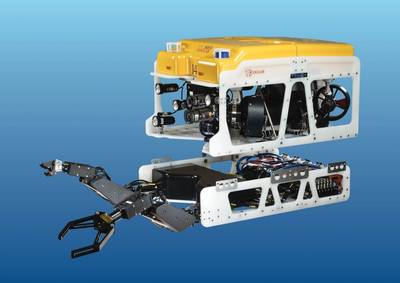Second Cougar ROV for Tidal Renewable Energy Installers
For its mastery of strong currents around tidal turbines, Keynvor MorLift Ltd has added a second Saab Seaeye Cougar XT to its ROV fleet.
This new addition comes fully containerized and can be easily transported across the globe.
Alongside their more conventional Cougar assignments Keynvor MorLift (KML), specialize in deploying their Cougars for operational, installation and maintenance work at tidal energy project sites in the UK and Northern Europe where exceptionally strong tidal currents occur.
“Being able to work in a strong tidal flow extends our working window deep into the tidal ranges,” said business manager Bobbie Stone, “and the Cougar has helped us achieve improved results, even when fitted with a tooling skid.”
Increasing their work time is a significant advantage for specialist marine contractor KLM and they actively undertake research and development in this area with their Saab Seaeye Cougar fleet playing a key role.
“We chose to acquire another Cougar,” Bobbie Stone said, “because it’s unrivalled in its class for the type of subsea work we frequently carry out, particularly in high energy sites. It has good intervention capability with specialist tooling and it provides great value for money for its capacity.”
In addition to work at tidal generation installations, KML’s Cougars are used for many subsea tasks, such as general survey, light work duties, subsea installation, recoveries and salvage, along with the deployment and monitoring of specialist subsea survey/research equipment, including acoustic doppler current profilers, known as ADCPs.
KML has its own fleet of vessels and whereas the first Cougar system was integrated into one of those, the new Cougar has its own customized container system. This means it can be deployed from any vessel, even a small workboat, either supplied from KML’s own fleet or sourced locally – resulting in reduced costs and increased flexibility for KML clients, explains Bobbie Stone.
She emphasizes the Cougar’s advantage as a compact vehicle that has power and maneuverability to handle bolt-on skids with different tooling options for a wide range of subsea tasks.
Its exceptional control and response come from its six thrusters: four vectored horizontally and two vertically. Each thruster has velocity feedback for precise control in all directions and is interfaced to a fast-acting control system and solid-state gyro for enhanced azimuth stability.

